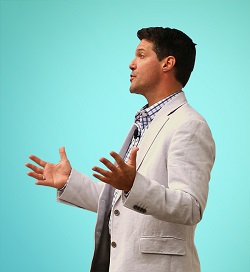Medical Alley: Past & Future of MedTech Innovation in Minnesota
Minnesota’s Medical Alley – a region that follows the corridor from Rochester to Duluth – is akin to California’s Silicon Valley; both are incubators for technological innovation, both are where it happens. In fact, Medical Alley stands alongside Silicon Valley as part of the Smithsonian National Museum of American History’s “Places of Invention,” a permanent exhibit highlighting hotspots of invention and innovation in American history.
Medical Alley is home to the world’s greatest concentration of health technology companies including leaders in the medical device, biopharmaceutical, diagnostic and digital health industry arena. It is the birthplace of one of the greatest advancements in modern medicine – the implantable cardiac pacemaker in the 1950s – and is the place where the medical technology industry intersects with health care providers, insurance companies and research organizations to improve patient access to innovation and help lower health care costs. Today, the past and future of medical technology innovation in Minnesota is supported by the aptly named Medical Alley Association (formerly LifeScience Alley).
At the helm of Medical Alley is Shaye Mandle, President and CEO. Shaye also serves as chair of AdvaMed’s State Medical Technology Alliance – a consortium of state and regional trade associations representing their local medical technology companies.
“Medical Alley is building the context and opportunity for a new type of health care leadership,” explains Mandle. The organization seeks to be a catalyst and a leader, bringing various players from across the health care spectrum together in new and unique ways to engineer solutions that can become models for other states. Whether it’s “value-based medicine, cost control or patient-centered care,” the health care dynamic in the U.S. is increasingly complex and shifting rapidly, he says, adding that Minnesota can be ahead of the curve when it comes to change. In other words, opportunity is knocking in Minnesota and Medical Alley is answering the door.
With more than 20 years of experience in business, government and academia – leading organizations, business development and public affairs at both the state and federal levels – Mandle is well-equipped to capitalize on these opportunities. He served as chief executive of the East-West Corporate Corridor Association and the Illinois Coalition for Science and Technology. He also has extensive public policy and political experience, having managed state and federal political campaigns and having served on the policy staff of former U.S. House Speaker J. Dennis Hastert and former Illinois Governor Jim Edgar.
Health care is Minnesota’s largest industry and a significant driver of the state’s economy. There are three times more medical technology companies per capita in Minnesota than in any other state, which is why Minneapolis is the perfect choice to host the premiere gathering of the medical technology industry: AdvaMed 2016.
This year’s conference will be the first since the suspension late last year of the medical device excise tax, and it is expected to generate significant discussion amongst attendees about how the monies saved are being put towards investment in R&D and job creation. For Minnesota in particular, where an estimated 25 to 35 percent of the collected tax nationwide came, the benefits of the tax’s suspension are significant.
“It is an exciting time for our industry, and the suspension of the device tax is a very positive way to start 2016,” Mandle says. “Our entire health care community and the broader business community look forward to welcoming med tech innovators from across the country to AdvaMed 2016 in Minneapolis with open arms.”
